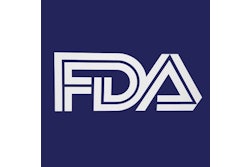PET drug manufacturers must rely on sterility assurance measures instead of sterility testing results as a safeguard against microbial contamination in PET drugs, according to an analysis presented June 24 at the 2025 Society of Nuclear Medicine and Molecular Imaging (SNMMI) annual meeting.
Statistical limitations associated with sterility testing of traditionally manufactured pharmaceuticals make it nearly impossible to detect microbial contamination in the finished product, wrote a team from Siemens PETNET Solutions, the University of Michigan, and the University of California, San Francisco.
"It is not appropriate to refer to a product as sterile based on sterility test results," explained PETNET Solutions Chief Technical Officer Steve Zigler, PhD, during the session. "The only thing that we can say about the batch, based on the sterility test, is that the product complies with the conditions of the compendial test."
Sterility testing is limited because many species of microorganisms cannot be cultured using standard sterility test conditions and because microbial contamination is nonuniform, according to Zigler. In addition, it will be difficult to prove a negative, as the absence of evidence is not evidence of absence. The compendial sterility test is not for PET drug product sterility, he said.
To prove the point, Zigler and colleagues gathered data on the rate of nonsterile batches of PET drugs distributed across U.S.-based manufacturers producing PET drugs according to 21 Code of Federal Regulations (CFR) 212 -- regulations on current good manufacturing practice (GMP) for PET drugs.
The team analyzed data from a survey conducted between 2020 and 2023 by the Coalition of PET Drug Manufacturers, SNMMI, and the Medical Imaging and Technology Alliance (MITA). Data included the number of PET drug batches manufactured, the number of nonsterile batches based on the two-culture media compendial sterility method, and batch and sterility test data for all PET drugs.
Both academic and commercial PET drug manufacturers responded to the survey. During his talk, Zigler estimated that the responses accounted for about one-half of the diagnostic, U.S. Food and Drug Administration (FDA)-approved PET drugs manufactured in the U.S.
Sorting out 10 years of data from 2013 to 2023, the team found that there were 628,511 batches of PET drugs reported. Of them were 87 sterility test out-of-specification (OOS) results (that is, batches that do not meet established standards or specifications).
Required OOS investigations found an OOS rate of 0.014%, Zigler noted, adding that the rate is well below the FDA's expected sterility test failure rate of 0.05%, a rate included in the PET GMP final rule from 2009.
"This allows us to estimate the 'sterility assurance level' for diagnostic PET drugs," Zigler said. "Assuming that all those 87 [out-of-specification incidents] were actually true product failures, which they were not, that would lead to a sterility assurance level, or SAL, of at most 1.4 in 10,000 batches. That's much better than the accepted SAL for aseptically processed nonradioactive drugs."
Zigler pointed out that the FDA regards PET drugs as high-risk products because they must be administered prior to sterility test completion. However, "from a sterility assurance perspective, PET drug manufacturing is low-risk," he said. "What that tells me is that the 212 GMP regulations are working."




















